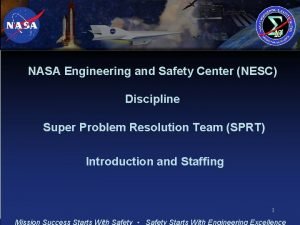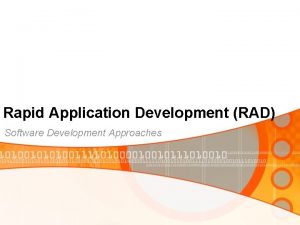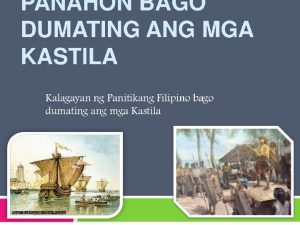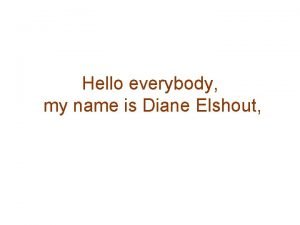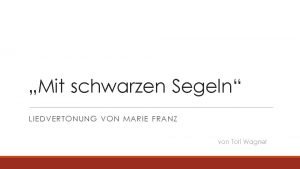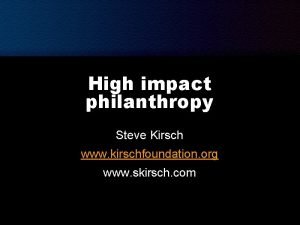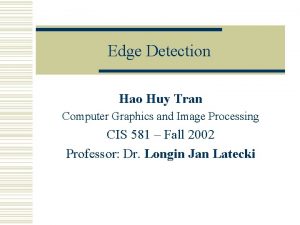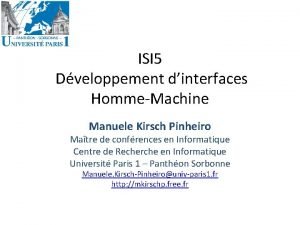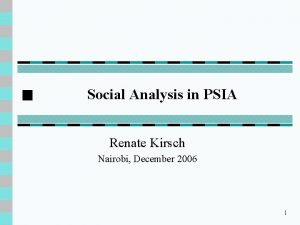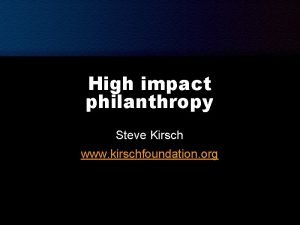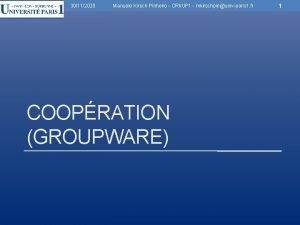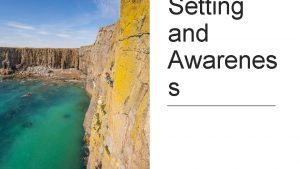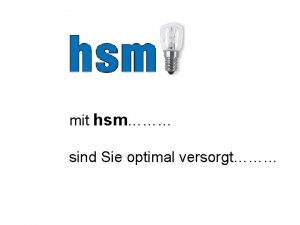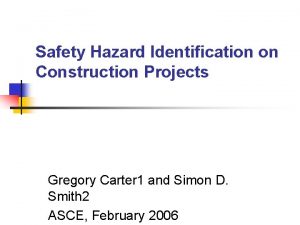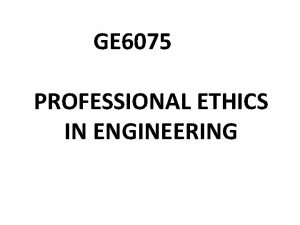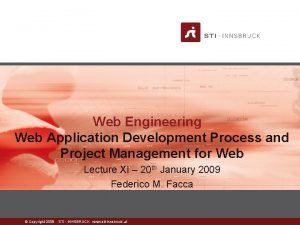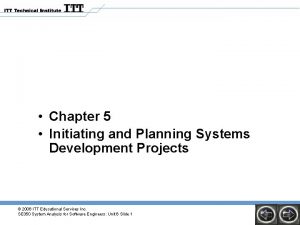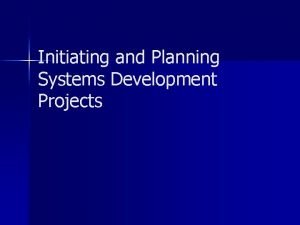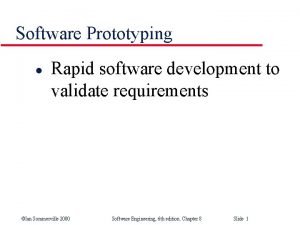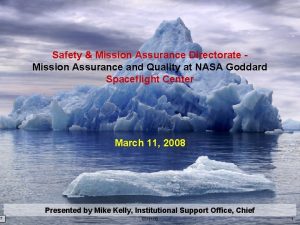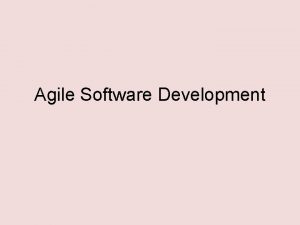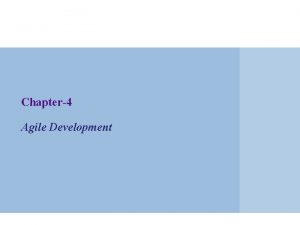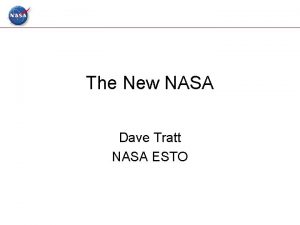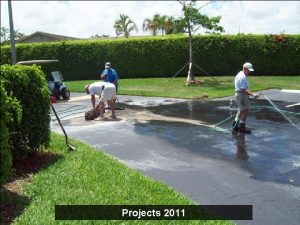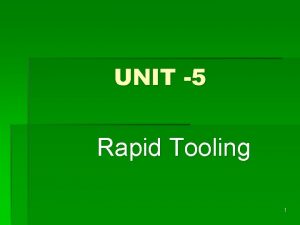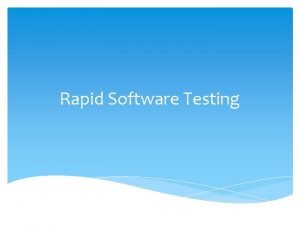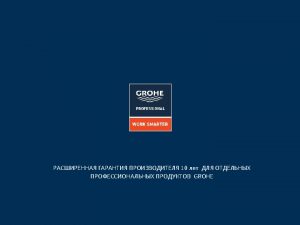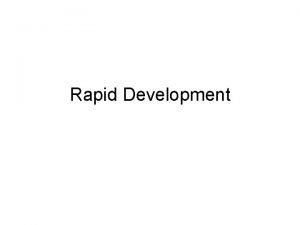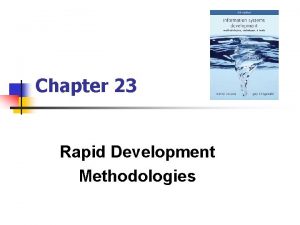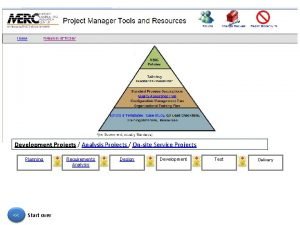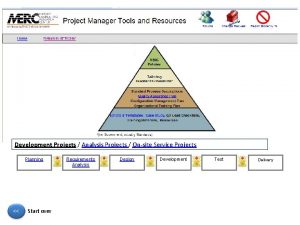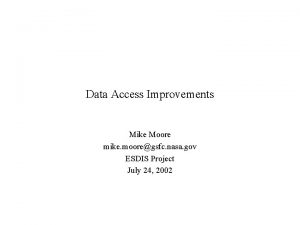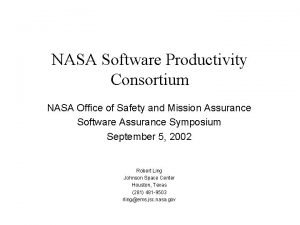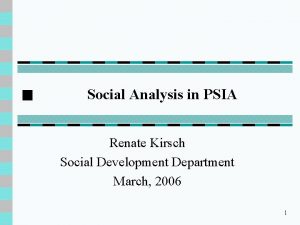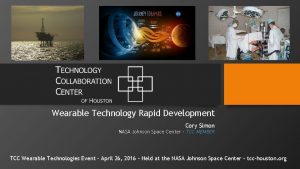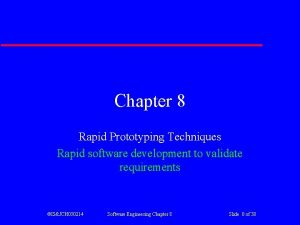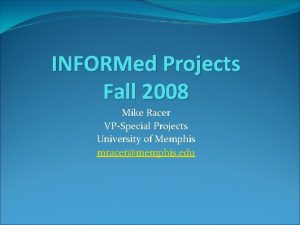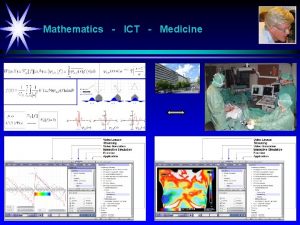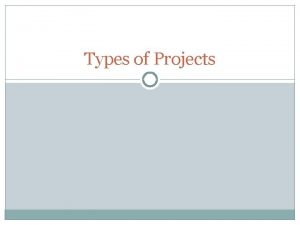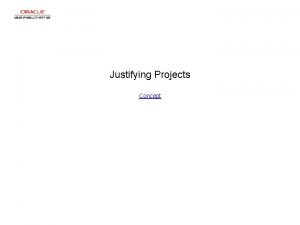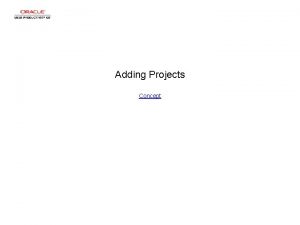Rapid Development Projects Mike Kirsch NASA Engineering Safety






















- Slides: 22

Rapid Development Projects Mike Kirsch NASA Engineering Safety Center

Presentation Objective § Capture Project Management Lessons Learned and Observations from the NESC’s Composite Crew Module project as well as other rapid design development activities.

Composite Crew Module Context § Geographically dispersed team across 4 time zones § Civil servants and contractors working side by side, no clear interfaces or organizational divisions § Competitive contractors on same team – collaborating (we all win, or we all lose) § Design and Manufacture full scale complex composite structure – typical duration ~ 5 years

CCM timeline

CCM

Project Management § The Project Manager must have practically full control. Ø Authority to make team adjustments with minimal overhead Ø Authority for make/buy decisions Ø Authority to proactively buy down risk; ie; long lead procurements, overtime, double shift, etc. Ø Authority to tailor processes (7120) Ø Authority to be agile; leverage opportunity and mitigate risks Ø Authority to say “good enough” § Thus the project manager must have top cover. On CCM I had the backing of my key stakeholders: Ø Ø NESC Director NASA Chief Engineer Associate Administrator § Stakeholders informed about every 2 weeks on project progress and products

Define a Clear Project Objective § Absolutely clear project objective: Ø “provide members of the NASA family hands-on design, build, and test experience on a complex composite structure so that NASA would have the skills for future Exploration hardware projects by: ” § Deliver a full-scale composite crew module primary structure for test, quickly; approximately 18 months from project kick-off to delivery o Specific, Measureable, Time constrained

NESC Alternate Heat Shield Carrier Structure § Develop and demonstrate an alternative heatshield carrier design with the goal of reducing the structural system mass by 25 percent, or approximately 800 lb. Ø § The sizing and material of the Avcoat system are not part of this assessment. The alternate design would be intended for implementation on EM-1 MPCV EM-1 DAC 1 ~ January 2013 - September 2013 Ø MPCV EM-1 DAC 2 ~ September 2013 – May 2014 Ø MPCV EM-1 Structures Design Review ~ July 2014 Ø MPCV Procurement for EM-1 Hardware starts ~ January 2015 Ø

Project Urgency § The Project Management Leadership team, and their leaders must maintain a sense of urgency § It is a race, but it is a marathon, not a sprint § Team Leaders must set and manage the pace to maintain momentum without burnout § Schedule is king once technical is good enough, lowest cost achieved by shortest schedule On technical, “better is enemy of good enough” Ø Without guidance, engineers may “sharpen the pencil” to perfection Ø

Independent Technical Reviews § Objective: Seek expert opinion on threats and opportunities § Any and all feedback was accepted, but no RIDs were dispositioned – open loop § Issues were collected and managed by PM team

Independent Technical Reviews were critical to synchronize the team § Independent Reviews were product focused – not decision gates § Independent Technical Reviews Ø Concept Review – ordered raw material Ø PDR – ordered tooling Ø CDR – Fabrication of piece parts, Analysis and CAD converged § Drawings were not a “constraint” MRR – Fabrication of assembly – 1 month of critical path drawings released Ø TRR – Full scale test readiness – Instrumentation plan, test plan released Ø § Note: MLAS switched to ITR 1, ITR 2, etc to avoid pre-conceived notions about technical review content § Independent Technical reviews were performed with same group: Ø Small team (15 -20) of subject matter experts § The whole CCM team was collocated for two weeks with the first week dedicated to dry running review material, and second week dedicated to presenting. Ø Much of the design converged during these two week blitz sessions

Team § Team recruited through Center Directors/Engineering Directors – “identify candidates” § Team members “interviewed” to assess agility § Parochial behaviors were squashed § Experts hired “LOE style” irrespective of company or center affiliation Ø Statements of work were product based, but loosely § Team adjusted regularly based on threats and opportunities Ø Not all members stayed with project § Every one on team doing “in-line” work – flat organization § Management approach Ø Full timers are “pro-active”. They need to know critical path Ø Part time are reactive ie; “what did I miss”. Part timers need to be given deadline on individual tasks

Colocations/Team building § CCM co-located the first 5 weeks of project § Home for 2 weeks § Then co-located again for 2 weeks § 7 of first 9 weeks, were co-located. § Weeks 1 – 5 set expectations, generated relationships § Weeks 6 and 7, members reverted to parochial thinking/decision making (human nature – not by intent) § Weeks 8 and 9 re-established “project based” thinking § Co-located for 2 weeks every two months thereafter, mostly coincident with independent technical reviews. Ø Bowling and Skeet shooting were used as social event

From Ralph Roe’s Safety Culture: Principle #1 – Develop Relationships ü Establish and build strong relationships across the team Ø The tendency is to over work the technical and neglect the personal relationship side of the project Ø Strong working relationships will allow the team to work through the difficult issues in an open, non-threatening environment

Communications § When Not “co-located”” Ø Ø Ø Tagup everyday at 8: 30 Team status/decision making M, W, F at 10: 30 Design/analysis sessions T, Th at 1: 00 Telecon/Webex nearly running 24/7 Instant messaging very valuable throughout Instant desk top sharing analyst to analyst, CAD to analyst, etc. Mode: Manage as if everyone were in the same room “how would we solve this if we were sitting next to each other” Ø Don’t wait for scheduled meeting to bring up issues Ø § When co-located Ø Ø § As PM, I always asked: Ø Ø § Emphasize project objective Start everyday with discussion of critical path and “late breaking news” “who’s using your result and do you know what they are going to do with it? ” Then I would ask, “who are you waiting on, and do they know you are waiting on it, and do they know how you will use their result? ” In general, “Engineers will not integrate themselves”

Heat shield carrier (HSC) Example - Daily Status § Project appears to be transitioning from multiple days § § § between handoffs, to hours between handoffs Coordination of the multiple spinning plates is critical! Daily Status – Discuss what you’re waiting on, and who’s waiting on you. Include discussion of ETA and ETD Be cognizant of provider and receiver schedule constraints (leave, travel, etc) Communication, Communication! Don’t assume others know what you want and don’t assume you know what they want – verify! Ø Be a system engineer first, and a discipline engineer second! Ø

HSC Example - Daily Status § What are you waiting on, and do they know? CAD Ø Static Analysis Ø Dynamic Analysis Ø Manufacturing Ø Test and Integration Ø Thermal Ø

Critical Path Management § Project schedule/critical path was “deliverable” centric – ie; § § products and “handoffs” Project schedule was discussed no less than weekly. Broad schedule covering total project at 2 weeks to month fidelity Rolling daily fidelity for current week through next 3 weeks. Always looking to “buy” schedule OT, second shift, outsource, make/buy Ø Theme: fastest schedule results in lowest cost because burn rate is ~ steady Ø § Always baseline “optimistic” durations – and hold/manage reserve at end. Never - ever criticize full time member for missing deadline Ø Criticize for not informing stakeholder if deadline will be missed Ø § Beware of part timers on critical path § THERE MUST BE A SENSE OF URGENCY!

Heat Shield Carrier Daily Critical Path Example § 2/7 - James sizes V 5 with smeared orthogrid spacing based on tabletop engineering at La. RC Ø § § § 2/8 - Jim sketches Ti orthogrid in 2 D – supplied to James 2/8 - James re-optimizes model to generate heights based on orthogrid spacing – supplied to Chris 2/8 - John provides Orion traceable CAD interface surfaces – supplied to Chris 2/8 - Brent generates CAD solution of compression pad to orthogrid interface 2/8 - John generates/updates CAD solution of truss/ring interface to orthogrid 2/12 - Chris Tolman generates CAD surfaces of selected orthogrid pattern and incorporates James’ new optimized orthogrid heights. Ø § Supplied to team for evaluation, including alignment with emerging manufacturing assessment 2/27 - James optimizes orthogrid sizing Ø Ø § Supplied to James for optimization 3/8 - John and Brent generate explicit solid CAD models using pattern spacing, web heights, etc from Chris/James. Ø § First CAD based mass estimate 2/22 - Eric and Greg generate explicit finite element models using pattern, spacing and web heights from Chris/James and interface definitions from Brent and John Ø § Supplied to Eric, Greg, 2/14 - Chris generates Solid cad model and supplied to John and Brent Ø § Supplied to Jim Supplied to Marshall and Claude for dynamic analysis Supplied to CAD team for update 3/8 - Marshall and Claude evaluate dynamic response of explicit model Ø Supplied to team for evaluation

Cost Management § Shortest schedule equals lowest cost Ø KNOW the critical path (fastener lead times are a killer) Ø Technically good enough to meet project objective Ø THERE MUST BE A SENSE OF URGENCY § Original cost was team size x labor rate x duration + procurements + travel § Once underway Estimate At Complete (EAC) was management method Ø Ø EAC = Actual costs + ETC = burn rate * remaining duration + other one time expenses § **If earned value is “Required”…** Ø BCWP (EV) = Budget – ETC. § Forward looking – rather than % complete § Considers open risks and mitigations that may not be in schedule baseline § Be careful asking for cost variance!

Configuration Management § CCM used ICE/Windchill § CCM had a person dedicated to effective use of ICE/Windchill. PM held team accountable for following his expectations when using ICE project side for general file storage Ø ICE product side for electronic review/approval of drawings, specs, models, etc. Ø

Rapid Development Take Aways § Baseline Clear Project Objective § Emphasize critical path and product hand-offs § Maintain Urgency § Think system first, discipline second § Be agile – react quickly to threats and opportunities § Advocate Technical peer reviews (ITR) § Focus on relationships § Train next generation
 Nasa safety center
Nasa safety center Rad software
Rad software Likido ang ikinabubuhay hanging ikinamatay
Likido ang ikinabubuhay hanging ikinamatay Calipso browse images
Calipso browse images Hello everybody my name is welcome
Hello everybody my name is welcome Musikkoffer sachsen-anhalt
Musikkoffer sachsen-anhalt Steve kirsch family
Steve kirsch family Kirsch compass masks
Kirsch compass masks Manuele
Manuele Renate kirsch
Renate kirsch Manuele kirsch pinheiro
Manuele kirsch pinheiro Steve kirsch net worth
Steve kirsch net worth Université paris 1
Université paris 1 Michaela kirsch
Michaela kirsch Kirsch bhkw
Kirsch bhkw Safety hazard identification on construction projects
Safety hazard identification on construction projects Engineering projects vs standard experiments
Engineering projects vs standard experiments Web engineering process
Web engineering process Initiating and planning systems development projects
Initiating and planning systems development projects Identification of the system for development
Identification of the system for development Initiating and planning systems development projects
Initiating and planning systems development projects Rapid prototyping techniques in software engineering
Rapid prototyping techniques in software engineering Safety and mission assurance
Safety and mission assurance
